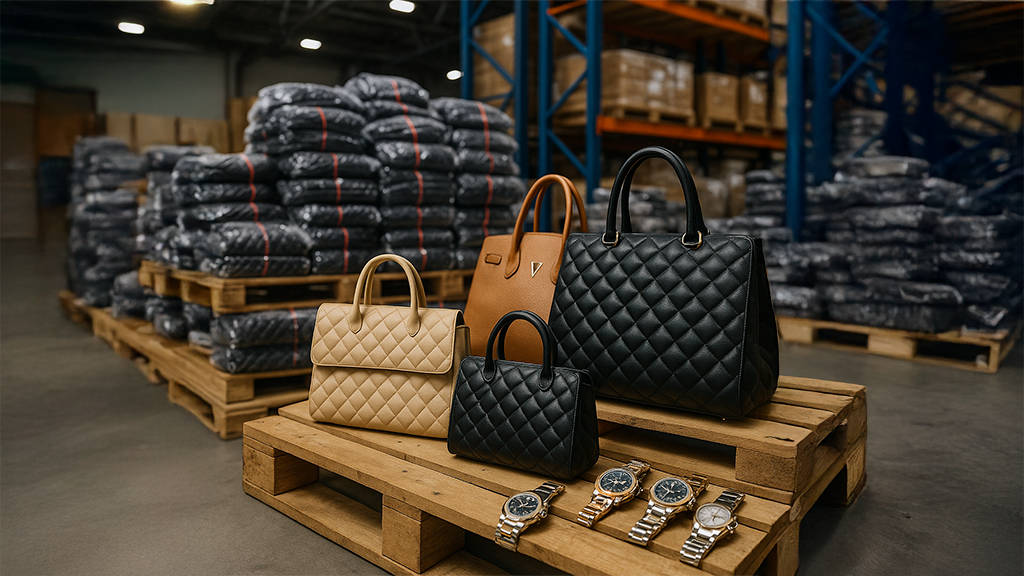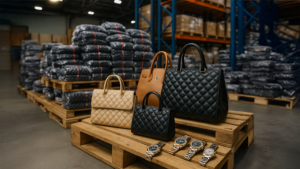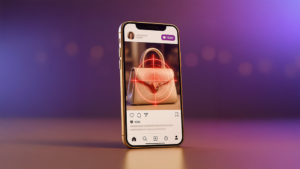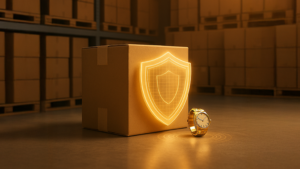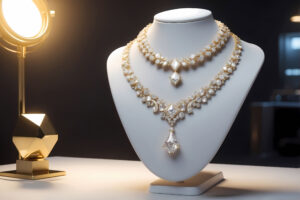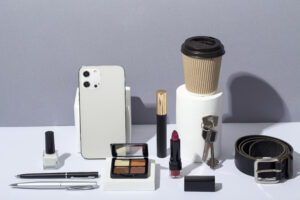The Bureau of Customs (BOC) staged one of the largest anti-counterfeit operations in recent Philippine history. In the heart of Divisoria, Manila, a commercial district long known for its dense web of wholesale traders, authorities seized over 1.7 million counterfeit luxury goods valued at USD 271.1 billion.
This was no routine enforcement action. The raid signalled an escalated government commitment to protecting intellectual property rights (IPR) and choking off a black-market economy that undermines legitimate businesses.
The size of the seizure was extraordinary, but its implications run deeper than the sheer volume of bags, clothes, and accessories hauled away.
What Was Found in Counterfeit Crackdown, and Where
The seized inventory included counterfeit items carrying the trademarks of Guess, Coach, Louis Vuitton, Michael Kors, and Tory Burch, brands that have fought global battles against knockoffs for decades.
These products were uncovered during coordinated warehouse inspections conducted by the BOC’s Customs Intelligence and Investigation Service – Intellectual Property Rights Division (CIIS-IPRD). The raids were carried out in close cooperation with brand representatives, including the legal team from Guess Philippines, who had reportedly flagged these locations months in advance.
The targeted sites were not makeshift stalls or back-alley operations. They were organized storage hubs, designed to supply both physical storefronts and online sellers. This speaks to a level of sophistication in the counterfeit supply chain that blends seamlessly into legitimate commerce.
The Real Impact of Counterfeit Goods
Counterfeiting is often framed as a victimless crime, justified by some as “giving consumers affordable access” to otherwise expensive goods. In reality, the costs are steep and widely distributed:
1. Financial losses to legitimate businesses & End Customers
Brands invest heavily in design, manufacturing, marketing, and distribution. Counterfeits siphon away sales while riding on the goodwill and brand equity built over years, if not decades. For end customers, the losses are more personal, they pay full price for products that often turn out to be fake, defective, or even unsafe, eroding trust not only in the brand but in online marketplaces as a whole.
2. Market distortion
When counterfeit goods are sold at a fraction of the price, they artificially depress perceived market value. This erodes fair pricing structures and consumer expectations, putting honest sellers at a disadvantage.
3. Health and safety risks
Poor-quality materials, toxic dyes, and substandard production environments can pose risks, particularly with counterfeit cosmetics, accessories containing metals, or even clothing with unsafe chemical residues.
4. Broader economic disruption
Fake goods bypass tax systems, starve local economies of revenue, and deter foreign investment by projecting a weak enforcement environment.
Why Divisoria Remains a Hotspot
Divisoria has long been a hub for low-cost, high-volume trading. Its dense network of suppliers, proximity to ports, and layered network of wholesale and retail channels make it fertile ground for counterfeiters.
Sellers can blend fakes with surplus items, grey-market imports, and legitimate goods, making detection challenging. This blending often extends into e-commerce platforms, where physical inspection is impossible and product photos can be misleading.
Moreover, Divisoria’s long-standing reputation for “good deals” makes it easy for counterfeit items to circulate without raising immediate suspicion. Many buyers, knowingly or not, fuel the cycle by prioritizing price over authenticity.
The Role of Tech and Brand Partnerships in Counterfeit Crackdown
One of the defining features of this counterfeit crackdown was the strategic use of technology. Commissioner Bienvenido Rubio’s administration has leaned into digital tools for tracking suspicious shipments, monitoring online sales channels, and cross-referencing brand watchlists with import data.
Brand owners like Guess are more than passive victims in this process, they are active partners. Their legal and investigative teams contribute critical intelligence, from product authentication expertise to historical data on repeat offenders.
Digital monitoring complements physical raids. By linking import records, payment transactions, and even social media sales activity, enforcement agencies can build stronger, faster cases against counterfeit networks.
Legal and Enforcement Shifts Under Commissioner Rubio
In years past, prosecuting counterfeiters often stalled due to procedural delays and fragmented jurisdiction. Under Commissioner Rubio, the BOC has streamlined prosecution processes and improved alignment between customs officials, brand legal teams, and local enforcement units.
This operational efficiency matters. Counterfeit goods are perishable in a legal sense, the longer they remain in limbo, the greater the risk of them re-entering circulation. Faster coordination in counterfeit crackdown ensures that seized goods are destroyed quickly and that cases move forward with minimal backlogs.
As Rubio stated after the Divisoria raid:
“This is about protecting the public, supporting legitimate businesses, and ensuring a level playing field in the market.”
What This Counterfeit Crackdown Signals to Sellers and Buyers
For sellers, especially those operating in the “grey” zone where authenticity is questionable, the message is clear: risk has gone up. Physical raids, digital surveillance, and stronger brand partnerships mean fewer safe havens for moving counterfeit stock.
For buyers, the “good deal” illusion is under sharper scrutiny. Beyond the legal risks, there’s an ethical dimension: purchasing counterfeits perpetuates exploitative labor conditions, funds unregulated industries, and chips away at the very brands people aspire to own.
Moving forward, both online and offline sellers should expect more proactive checks. Marketplaces that fail to vet their sellers will face greater regulatory pressure.
Bigger Picture: Fake Goods as a National Concern
Luxury handbags might grab headlines, but the counterfeit economy spans far beyond fashion. Fake cosmetics can contain harmful chemicals; counterfeit electronics can overheat or cause fires; falsified supplements can put health at risk.
The economic toll is equally damaging. Every sale of a counterfeit product is a missed tax contribution, a missed opportunity for a legitimate manufacturer, and a dent in investor confidence.
In emerging markets like the Philippines, the perception of weak enforcement can also slow the entry of global brands that might otherwise invest, open stores, and create jobs.
Conclusion: The Crackdown Isn’t Over
The Divisoria counterfeit crackdown is more than a single victory, it’s a signal. It reflects a coordinated, tech-enabled, and legally efficient approach to IPR enforcement that other sectors will likely see replicated.
But real, lasting change requires more than headline raids. It will take continuous collaboration between government agencies, brand owners, and digital platforms. It will also require public awareness, so consumers understand the true costs of supporting counterfeit trade.
In any marketplace, trust is the currency that keeps commerce alive. Counterfeit goods don’t just break the law, they break that trust. And in the long run, a market built on deception is not only unsustainable, it’s destined to collapse under its own weight.

